Chapter 1: Living a Wine Encore
Age is not in the equation when following your passion and interests.
Preface
The following is the opening salvo of a book I'm writing to chronicle my life's wine encore: tending to a vineyard and winemaking.
A life encore can be considered a second, or in my case a fourth, career later in life that people often start after leaving or retiring from their initial careers. It can be defined by the question, “What do I want to do with the rest of my life”?
This is where the book and Marshall’s Wine Encore begins.
Marc Freedman coined the term in his 2007 book "Encore: Finding Work that Matters in the Second Half of Life." Encore careers are often motivated by a desire for personal fulfillment and social impact rather than economic factors.
This chronicle is a personal telling of my wine encore journey. It provides the context, reasons, and decision-making along the way. The issues, mistakes, limitations, and successes are related in all their glory.
You can find some of the content I use for my writings at Marshall's Wine Encore website. While the website content is reasonably thorough—covering information about my experiences tending to a vineyard and winemaking—it is distributed among many pages and posts. This book will reorganize the stories more chronologically. I hope it will prove helpful for people who enjoy reality-life storytelling interlaced with practical information from a DIY perspective.
I don't have a title for the book; it should fall out of the telling.
I'll let you know when that occurs!
Chapter 1
Why wine for a life encore?
It began innocently when I worked as a part-time clerk in a wine shop in Norman, Oklahoma. I had two years of college remaining, and having income to cover my overhead was paramount. During my clerkship, I became infatuated with wine. The store maintained a respectable collection of various wines from California and Europe.
Growing up on iced tea, soda pop, and, in later years, cheap beer, wine was a whole different world. It had a history with stories to tell. Wine was multifaceted, accompanied by brilliant colors and alluring aromas, with complex tastes that were challenging to describe. I poured myself into learning about wine, enabling me to assist customers in their selections.
Upon graduation, I leveraged my environmental design degree by volunteering for a federal program, Volunteers in Service to America (VISTA), a domestic version of the Peace Corps. I worked in low-income Denver urban neighborhoods, helping residents design their communities. This is how I met my “change the world” life partner, Janine.
After VISTA, I grappled with what to do next.
As a stop-gap measure, or so I believed at the time, I used my college wine clerkship experience to gain a job as wine manager for a large Denver family-run liquor store with a sizable and extensive wine inventory. I reorganized the wine department, focusing on country of origin and region, and clearly labeling the various sections. We also began wine and region-specific sales events to attract certain customer types and tastes. In addition, this was my first opportunity to work with wholesale wine representatives and producers.
My wine-learning and industry knowledge grew, facilitating opportunities to work for a Colorado alcohol wholesaler.
Wholesalers are the middlemen in the alcohol sales infrastructure. From creation to the public, the alcohol industry in the United States is organized into three tiers: producers (wineries, distillers, and brewers), wholesalers (who buy from the producers), and retail and restaurants (referred to in the industry as “off-premise” and “on-premise”).
A logical step in my continued growth within the wine industry was to work for a wholesaler. It wasn’t long before I had the chance to do just that, as a wine consultant.
In the mid-’80s, as I worked retail and transitioned to wholesale, California boutique wine producers and associated sales were exploding. During that time, boutique was a commonly used term for small wineries emphasizing quality over quantity.
Why?
In the preceding years, beginning in the 60s and early 70s, boutique wineries began emphasizing the terroir’s positive influence on wine quality. Terroir is a French word encompassing soil, topography, and climate. They also bettered viticultural practices in the field and adopted modern wine-handling approaches in the winery. Steady growth ensued, further catapulted by the “Judgement of Paris” in 1976. This competitive blind wine tasting event set the wine world on its nose, with California wines rated the best in Chardonnay and Red categories over their French counterparts.
If you hadn’t been paying much attention to the burgeoning California wine scene, you did now.
The wholesaler I worked for primarily represented West Coast and European boutique wines. Larger wholesalers tended to lead with table wines, which had dominated the market for years. These were often called jug wines because they sold en-mass in gallon and half-gallon jugs. You may recognize several names from back in the day: Gallo, Almaden, Inglenook, Carlo Rossi, and more.
We didn’t carry jug wine but did represent a table wine brand that many people didn’t consider as such: Robert Mondavi’s Red, White, and Rosé. Mondavi produced varietal wines, well-known for their Fumé Blanc and Cabernet. We also represented one Colorado wine (there weren’t many): Colorado Mountain Vineyards, managed by Jim and Ann Seewald, now Colorado Cellars.
With an excellent wine portfolio, my travels took me to Colorado Springs and southern and western Colorado, where I provided wine consultations and sales to restaurants and stores. I also had opportunities to visit California wine country and interact with wine growers and makers.
I loved Colorado. Traveling this beautiful state and talking with people about wine was a dream job come true for a while. After a few years, the pace became grueling, and envisioning a future in the wine world became a challenge.
My heart began leading me back to my earlier working days in the community. I had an innate desire to further my education and public service experiences, possibly working in city planning or management. Graduate studies were called for. After graduation, I began working for the City and County of Denver. While with Denver, I worked for City Council, the Mayor’s Office, and Planning and Community Development.
Fast-forward a few years. Janine and I were raising our two daughters, Jeannie and Jackie. Time with wine was typically not a part of our lives unless we traveled. As the girls got older and we began to travel more widely, we’d take advantage of wine side trips.
One memorable trip involved a few days at Hotel Comtesse M. de Loisy in Nuits-St-Georges. Countess Christine de Loisy, probably in her mid-eighties, presided over the hotel’s affairs in her home. She also oversaw the winemaking of her prominent Burgundian family. We enjoyed dinner with the Countess one evening, drinking her wine and touring the cellars below, which stretched under several blocks. At the end of the evening, she regaled us with stories of tricking German soldiers during World War II, when her family and friends were attempting to move and hide wine around the district.
This same trip produced what is now forever known in our family as “the Gigondas incident.” I brought back two bottles of Gigondas wine from our travels. The first was consumed during the first year of our return—it was tremendously enjoyable. With the second bottle, I waited. And waited. My daughters kept bugging me to open and enjoy it. I finally did some 10 years later—it had gone bad. For evermore when I engage in a dad stalling maneuver—one of my signature moves—my daughter’s refrain is: “Daaaad, don’t pull another Gigondas”!
My wife and I took another trip through California wine country in 2008, spending most of our time in Sonoma County. Curious, I picked up the hotel phone book and looked up an old friend: Eric, a mentor during my formative community service years in Denver and the best man at our wedding. We hadn’t had contact in quite a while, and he was rumored to be teaching in the California University system and living in Sonoma.
Remarkably, there he was.
"Please come by for a visit," Eric exclaimed. "Mi casa es su casa, and our winery is just a few miles from the plaza."
Say what?
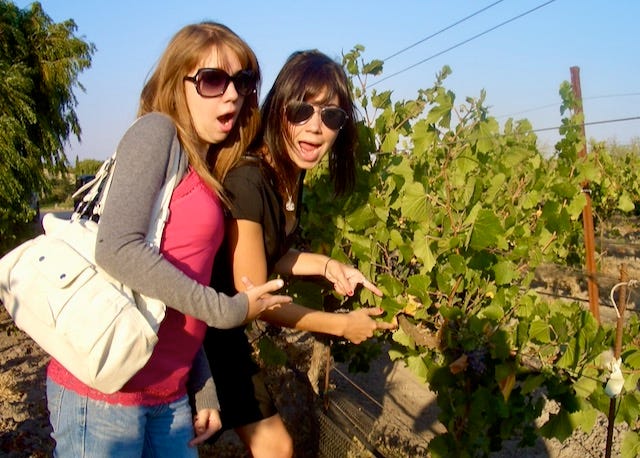
While Eric didn't have a wine background, his partner did. He worked as a viticulturist with area wineries. They had purchased a property with vines in the Sonoma Los Carneros region and were making and selling wine: Pinot Noir, Chardonnay, and Syrah. My friend would rib me as I continued to react with astonishment at his current lot in wine country, “Well, you shouldn’t be that surprised; you first taught me about wine.”
Um, food for thought.
We had a wonderful visit, which soon altered my life path.
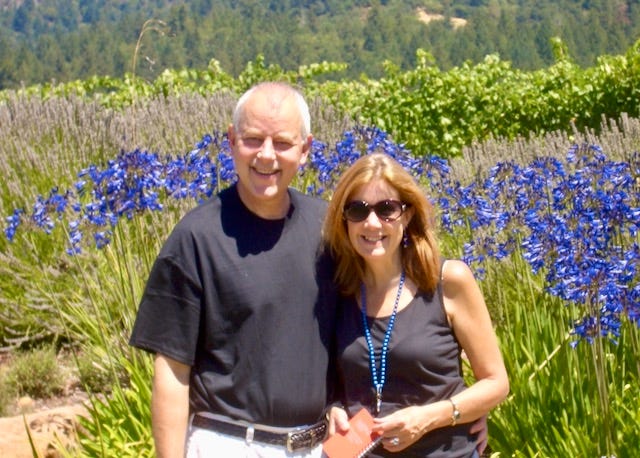
Winemaking became a hobby. My wife and I began visiting California, Oregon, and Colorado wine regions more frequently, especially Colorado wine country, which is a four-hour drive from Denver. It didn’t hurt that I now worked for a municipal software company based in Victoria, British Columbia. Soon, my daughter was to go to school in Tacoma, Washington.
Opportunities to travel the West Coast and its attendant wine regions abounded. For example, we officially became empty nesters after moving Jackie to college. Janine was heartbroken, so impulsively, we detoured via the West Coast on the drive back to Denver, visiting Oregon and Sonoma wine country.
We favored one locale in western Colorado: the North Fork Valley. We grew to love the green valley on either side of the North Fork of the Gunnison River. It was framed by the West Elk Mountains, Grand Mesa, and canyon land studded with juniper and sagebrush. The valley's temperate microclimate supported fields, orchards, and vineyards.
After several years of visiting Colorado winemakers and growers, I became enamored with the idea of growing grapes. At the time, my wine was made from juice and grapes imported through local winemaking shops in Denver.
I was less enamored with the quality of the sourced material.
This changed in 2018 when I received grapes from a well-respected western Colorado grower. The resulting juice analysis returned great numbers for winemaking. All I had to do was not mess it up. Pitch the yeast and carefully rack (move from one container to another) when needed to clear the wine and bottle.
Six years later, I'm still enjoying that Cabernet.
This cemented the idea of having a farm-to-table operation: growing vines and grapes and making wine on our property in western Colorado.
But how to make it happen?
Then, COVID-19 intervened.





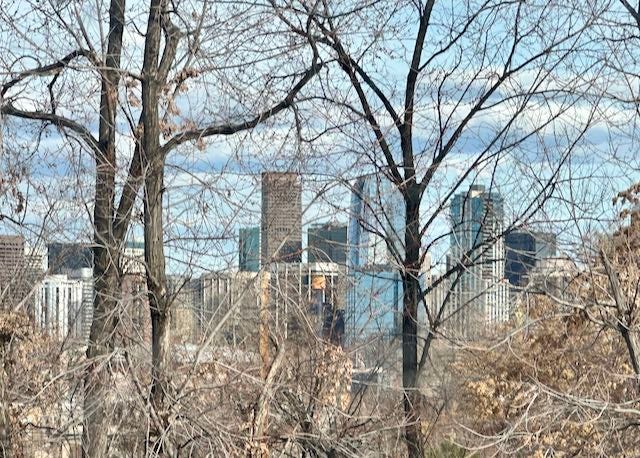
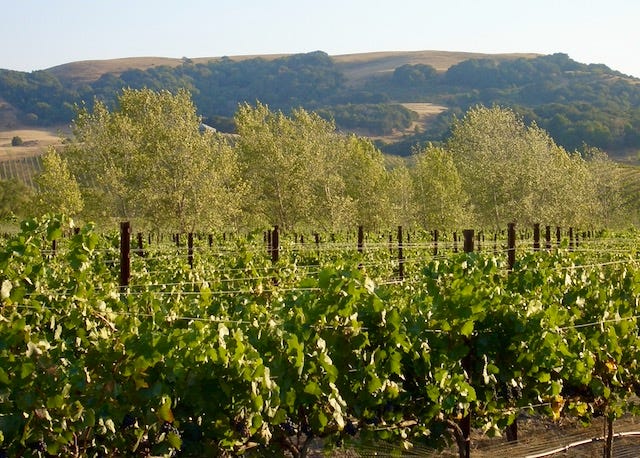
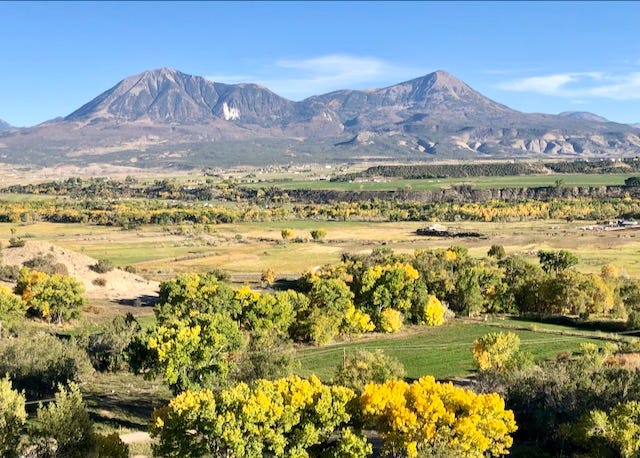
Loved it! Didn’t know about your visit and tour with the Countess. That must have been an awesome experience!
Looking forward to the next chapter!